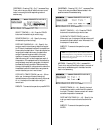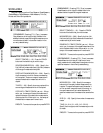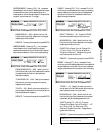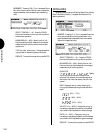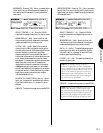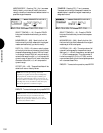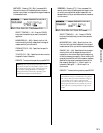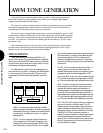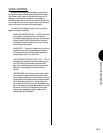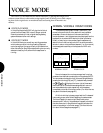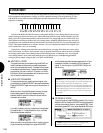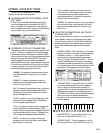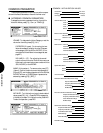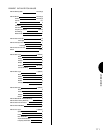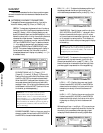
AWM TONE GENERATION
105
VOICE CONTROL
Musical instrument sounds are constantly changing and
can be very complex. Different types of instruments change in
very different ways. With an instrument such as a piano, for
example, the tone and volume of each note changes in a
predictable way over time. With an instrument such as a violin,
on the other hand, the volume, tone and pitch may be continu-
ously modified by the musician during performance.
The W5/W7 provides many ways to control the various
aspects of the sound, as follows:
ENVELOPE GENERATOR (EG) - The EG produces a
fixed pattern of change over time. For example, to
simulate the attack and decay of a piano, you would set
the amplitude EG (AEG) to be loud when the note is
first played, and then to gradually diminish in volume
over the following moments.
KEY VELOCITY - The velocity (speed) with which you
play each key can affect various aspects of the sound.
For example, strongly and softly played notes can be
made to differ in pitch, tone, or volume.
LOW FREQUENCY OSCILLATOR (LFO) - The LFO
produces various patterns of cyclical change. Applying
the LFO to the pitch component produces vibrato;
applying it to the filter component produces wah-wah;
applying it to the amplifier component produces
tremolo.
CONTROLLERS - Controllers such as the pitch bend
and modulation wheels, aftertouch, and optional foot
controllers can be used to control the sound in a variety
of ways. Some controllers such as the pitch bend wheel
can directly determine the pitch. You can assign the
various other controllers to control many aspects of the
sound. For example, you might assign aftertouch so that
the amount of vibrato (LFO modulation to the wave
component) increases as you apply pressure to the
keyboard after the initial attack.



